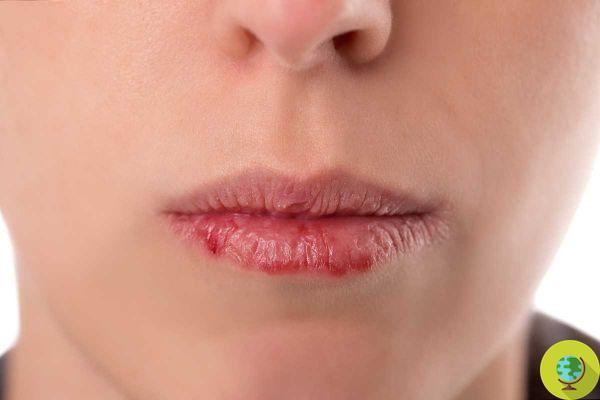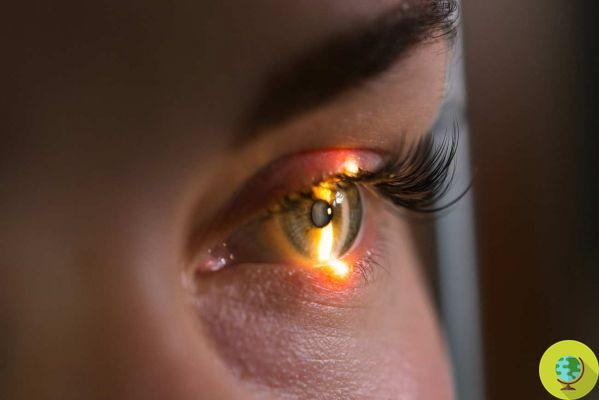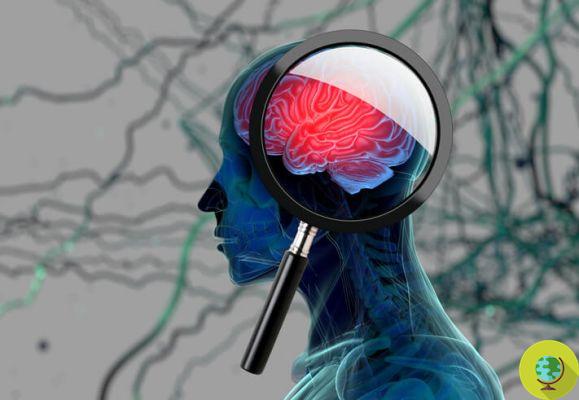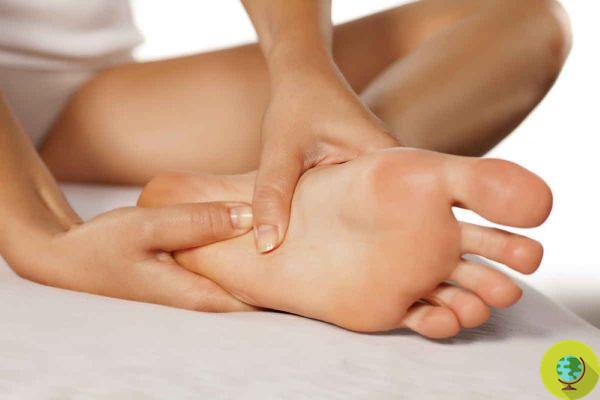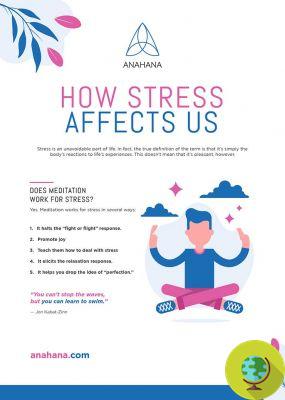20 eye symptoms we should never ignore.
Don't store avocado like this: it's dangerousWhat does it mean if the eyes are always red? And why can you see it blurry or even double? Here are 20 eye symptoms we should never take lightly
Fatigue, itching, redness, but also burning, flickering or flashing. Everyone has had specific eye problems at one time or another in life. Some are marginal and go away on their own, or are easy to treat at home, others need specialist care. In all cases, these are authentic eye symptoms that should never be underestimated. But what are they specifically?
It is no coincidence that the ophthalmologist is one of the doctors we attend with less regularity: the eye check is not something we do with a certain frequency, indeed, if we do not have particular deficiencies in vision or symptoms with which we really cannot live. , we tend to forget about it.
Yet, not everyone knows that an eye exam can not only improve the way we see, but also provide information about our general state of health: hypertension, high cholesterol or infectious diseases, for example, can only be diagnosed after a check by the doctor. ophthalmologist.
Here are the most common symptoms to pay attention to:
Index
Fatigue and redness
Reading or standing in front of the PC for hours or driving long distances, the eyes get tired and irretrievably blush. They get tired and need to rest, just like any other part of our body.
If your eyes feel tense and red for too long, give yourself some free time. If they are still very tired after a few days, see your doctor.
As for the redness real, then, remember that the surface of the eyes is covered by blood vessels that expand when they are irritated or infected. This can be caused not only by severe eyestrain, but also by lack of sleep or allergies.
Also, red eyes could be a symptom of another eye condition, such as conjunctivitis or sun damage.
Night blindness
Ever notice if you have trouble seeing at night, especially while driving? Or to orient yourself in dark places like the cinema? This is the so-called "night blindness”, A symptom and not a problem in its own right.
It can be caused by myopia, cataracts, keratoconus (a disease that causes the cornea to deform), a lack of vitamin A or a degenerative disease, but some people may also be born with this problem.
Lazy eye
Lazy eye or amblyopia occurs when one eye doesn't develop properly. Vision is weaker in that eye, which will tend to move "lazily", while the other remains stationary. It can affect both infants and children (for whom action should be taken promptly) and adults and rarely affects both eyes.
Lifetime vision problems can be avoided if a lazy eye is detected and treated during early childhood. Treatment includes corrective glasses or contact lenses and the use of a patch or other strategies to get a child to use the lazy eye.
Strabismus and nystagmus
If the eyes are not aligned with each other when looking at something, it could be a squint. This problem will not go away on its own, but with an ophthalmologist it is possible to correct it to a great extent.
With the nystagmus, the eye moves involuntarily, rapidly and repetitively. There are many treatments for this problem, including surgery.
Colour blindness
When you can't see certain colors or tell the difference between them (usually reds and greens), you may be color blind. It happens when the color cells in the eye (the doctor will call them cone cells) are absent or not working.
When the condition is at a severe stage, what is seen are only shades of gray.
Most people are color blind from birth (it affects boys more than girls), but color blindness can also be caused by certain medications or diseases. There is no treatment other than special contact lenses and glasses that can help tell the difference between certain colors.
Read also: Color blind people see colors for the first time: the moving reaction (VIDEO)
Uveitis
It is a inflammation - which can affect at all ages - part or all of the middle (vascular) layer of the eye (the middle layer of the eye that contains most of the blood vessels).
It is a condition that can destroy eye tissue and even cause loss of the eye.
People with immune system conditions such as AIDS, rheumatoid arthritis, or ulcerative colitis may be more likely to have uveitis. Symptoms can include:
- blurred vision
- pain in the eye
- redness of the eyes
- sensitivity to light
See your eye doctor if you have any of these symptoms and it doesn't go away within a few days. There are several types of treatment for uveitis.
Presbyopia
Especially after the age of 40, you might lose the ability to see nearby objects clearly and the little things, so much so that it is necessary to keep a book or other material further out of sight to make it easier to focus.
Treatments can be reading glasses, contact lenses or laser eye surgery.
Movable bodies
You can have the perception of "flying flies”Or black dots or cobweb-like threads floating in front of the eyes. It is a frequent disorder that can also affect very young people, but it should not be a cause for concern because, in most cases, it is due to the formation of simple floaters or floaters, the so-called "floaters" in English.
In general, moreover, the floaters are not responsible for eye diseases, but are rather the result of rather widespread alterations of the vitreous that appear after a certain age, but also at an earlier age if ocular trauma or some ocular pathologies have been suffered. , including myopia to some degree.
If you notice a sudden change in the type or number of spots, see your eye doctor as soon as possible.
Read also: Maculopathy: what it is, symptoms and treatments
Dry eyes
This happens when the eyes fail to produce enough good quality tears. The sensation is that of having something in the eye or burning. Rarely, in severe cases, extreme dryness can lead to loss of vision. Some treatments include:
- a humidifier in the house
- a special eye drop that works like a real tear
- insertion of tear ducts to reduce drainage
- "Lipiflow", a procedure that uses heat and pressure to treat dry eyes
- eyelid cream
- food supplements with fish oil and omega-3s
If the problem with dry eye is chronic, the ophthalmologist might diagnose a "dry eye disease" and prescribe medicated drops such as cyclosporine (Cequa, Restasis) or lifitegrast (Xiidra) to stimulate tear production.
Excessive tearing
Conversely, red, tearful eyes could indicate one keratitis, a corneal infection that causes redness, pain, inflammation, and severe tearing. It can be treated easily if it is early, but it is essential to avoid scarring that could worsen the disease and encourage the development of corneal ulcers.
Cataract
A healthy eye is like that of a camera: light passes through the retina, the back of the eye where images are processed. When you have a cataract, light cannot pass easily and the result is that you don't see well and you may notice a glow or halo around the lights at night.
Cataracts often form slowly, causing no symptoms such as pain, redness, or excessive tearing in the eye. Some remain small and do not affect vision, but if they progress and affect good vision, surgery is almost always done.
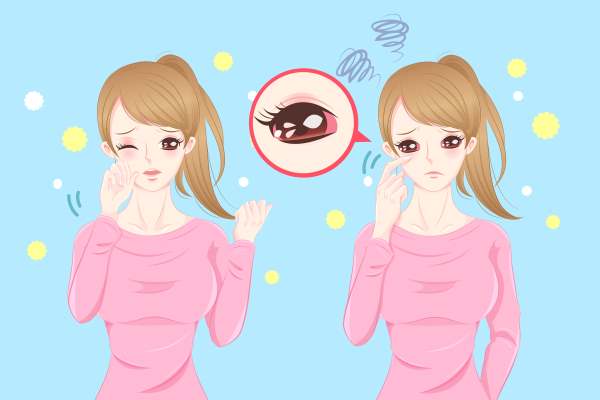
Glaucoma
The eye is like a tire: a certain one pressure inside it is normal and safe. But levels that are too high can damage the optic nerve, and "glaucoma" is the name for a group of diseases that cause this condition.
A common form is the primary open-angle glaucoma. Most people who have it don't have early symptoms or pain. So it is important to have regular eye exams.
It doesn't happen often, but glaucoma can be caused by:
- an eye injury
- blocked blood vessels
- eye inflammation
Treatment includes eye drops or surgery.
Disorders of the retina
The retina is a thin lining on the back of the eye, made up of cells that collect images and transmit them to the brain. Disorders of the retina block this transfer. There are several types, such as:
- age-related macular degeneration, which refers to the breakdown of a small portion of the retina called the macula
- diabetic retinopathy, which is damage to the blood vessels of the retina caused by diabetes
- detachment of the retina, which occurs when the retina separates from the underlying layer
It is important to get an early diagnosis and treat these conditions.
Conjunctivitis
In this condition, the tissue that lines the back of the eyelids and covers the sclera becomes inflamed. It can cause redness, itching, burning, tearing, or a feeling that something is in the eye.
It can be had at any age and causes include infection, exposure to chemicals and irritants, or allergies. Wash your hands often to reduce the chances of getting conjunctivitis.
Read also: Conjunctivitis: 10 natural remedies
Diseases of the cornea
The cornea is the dome-shaped "window" at the front of the eye. It helps to focus the light that enters. A particular disease, infection, injury, or exposure to toxins can damage it. The signs include:
- Red eyes
- eyes full of tears
- pain
- reduced vision or halo effect
The main methods of treatment are a new prescription for glasses or contact lenses, medicated eye drops and surgery.
Problems with the eyelids
Our eyelids do a lot for us. They protect the eye, spread tears to its surface and limit the amount of light that can enter.
Pain, itching, watery eyes, and sensitivity to light are common symptoms of eyelid problems. You may also have intermittent twitching or inflamed outer edges near your lashes. In these cases, proper cleaning, drugs or surgery must be used.
Read also: Sagging eyelids: natural remedies and facial gymnastics exercises (VIDEO)
Problems with contact lenses
They work well for many people, but you should definitely take care of them. Wash your hands before touching them and follow any guidelines your eye doctor has given you. And follow these rules:
- never wet them by putting them in your mouth. This can make an infection more likely
- make sure the lenses fit properly, so they don't scratch your eyes
- use eye drops that are safe for contact lenses
- never use homemade saline solutions
- even though some lenses are approved for sleeping that they do, it raises the risk of a serious infection
If everything is done perfectly and you have problems with your contact lenses, consult your ophthalmologist. You may have allergies, dry eyes, or feel better in glasses.
Read also: Contact lenses: 7 things to know before using them
Seeing double
Some may experience double vision in one or both eyes. If the condition affects only one eye, a corneal problem may be present. If it affects both eyes, it means that they are not working together in the right way. The cause could be in a neurological problem, an autoimmune disease or other serious medical condition.
If, in addition to double vision, you also feel pain, weakness, difficulty speaking, go to the emergency room.
Pupils of different diameters
It is the so-called "anisocoria”, An inequality in the diameter of the pupils. Generally, if in an adult a pupil becomes larger or smaller and no eye drops are used, then it is better to see an ophthalmologist.
The disorder could have ocular origin (in cases where it is seen double) or result from neurological or muscular problems, or a systemic inflammatory or immune disease such as high blood pressure, diabetes or multiple sclerosis.
Pain
The eyes shouldn't hurt. It could be the consequence of injury or trauma, but also the symptom of pathologies that are dangerous for the eyes, such as optic neuritis, an inflammation of the optic nerve, which can lead to reduced vision up to low vision and blindness. It is the first manifestation of multiple sclerosis in about 50% of cases.
Read also
- Chalazion: causes, cures and remedies for adults and children
- Dark circles: causes and 10 natural remedies
Germana Carillo




